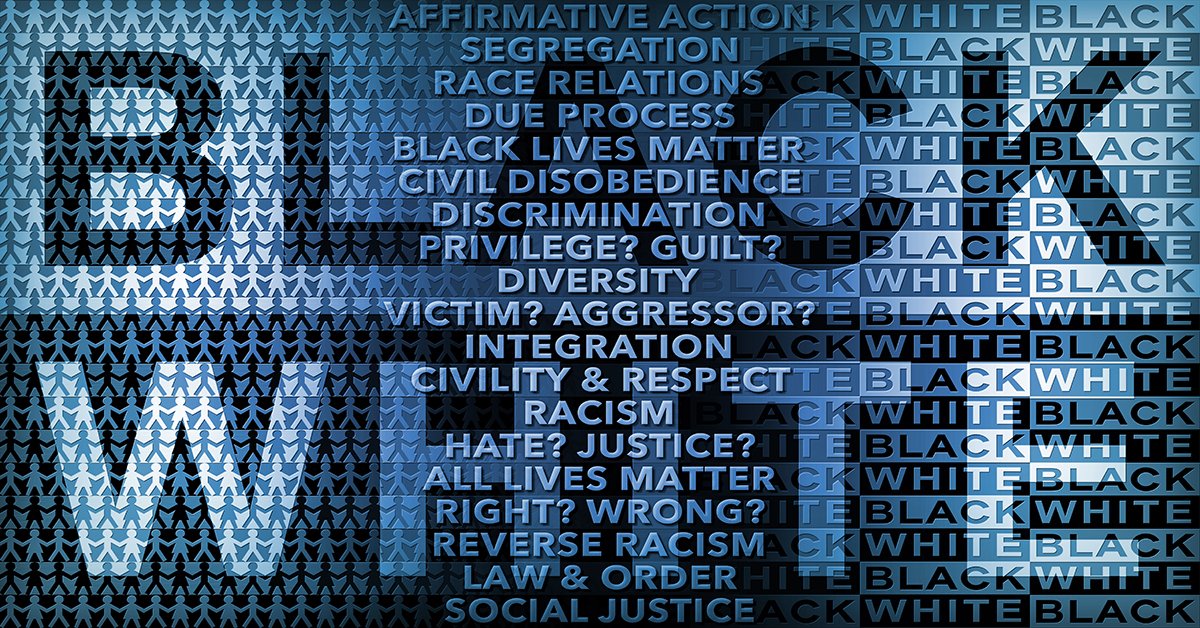GRINNELL, IA — The straight white male history teacher could not have been more repentant.
“I drew incorrect conclusions …. I misinterpreted … I did not paint an accurate picture,” he said of an attack letter he wrote about efforts to make Grinnell-Newburg’s public school curriculum more diverse and welcoming.
“I failed to reach out… failed to take the time …. misinterpreted… had preconceived notions,” said Kent Kastendick. On he went, in at least 17 different ways, trying to pull back the wave of anger, suspicion and fear he inspired when he wrote “Why I Left Education After 25 Years” last month and lambasted culturally sensitive education as the “crazy train” and “destructive.”
“I truly regret it…. I’ve betrayed the trust of members of our community …. I failed at this miserably …. Don’t get on a bandwagon or hold me up as a symbol or cause.“
But they did.
The majority of people who attended or Zoomed in on a wrenching March 10 School Board meeting — among the most highly-attended School Board meetings in Grinnell’s history — celebrated the words Kastendick was desperately trying to take back, after publishing a column in the new self-described “center-right” publication, The Iowa Torch.
They repeated Kastendick’s words, thanked him for them, and then they went further.
The result was painful, embarrassing, revealing, stunning and hurtful, as many described it. If we’re honest, it’s a night like many that have occurred at School Board meetings across Iowa, even the country.
Now that the Iowa Legislature and our Governor are about to ban diversity education overall, we’re bound to hear more painful discussions like the one that took place in Grinnell last month.
No news media appears to have documented that night. I myself witnessed it only weeks after it happened, and only through an audiotape. I’m thankful I couldn’t write about it until now, when the Derek Chauvin trial and the Legislature’s anti-diversity move makes it even more relevant.
I’m writing about it in this blog, without using speakers’ names, so we don’t get distracted by personal allegiances and politics of small towns, or finger-pointing. So the words and concepts expressed that night can be seen from the bird’s eye view for what they are: a representation of ideological and verbal clashes going on across the country right now among neighbors, colleagues, families and friends.
By audio only, I was forced to cope in a sensory way with the ugly truth: more people that night, in that snapshot of small-town Iowa and America, were worried about the discomfort of white people than of People of Color.
Booming applause followed every speaker who objected angrily to the new diversity efforts; little to no applause followed everything else. Most painful was the silence that followed one speaker’s sharing of offensive situations they’d heard of or witnessed over the years: Black people called the “n” word, “being told to go home, being told they don’t belong here.”
A teacher who publicly questioned whether the Washington Redskins really needed to change their name. A special education teacher joking while using video games of being a “Wi-tard.” “That’s not funny, that’s deplorable,” the speaker said.
From the audience: silence.
Moments later, the trembling voice of an angry man came across the recording. “I can’t believe what you people approved,” he started, and then dropped a run of lines that tapped a litany of bad buzzwords for conservatives. “I’ve had friends of mine that fought in wars to take down socialism… This country was built on Christianity and you guys are defeating it… You’re brainwashing our students.”
He received vigorous applause — but not as big as the handclaps a hairstylist earned later, when she insisted no one SHE’s ever met has ever come to HER and “said one thing about the N word or anything.” However, she shared, her tall blond beautiful daughter has been “ridiculed for being pretty.”
Several others bemoaned the discomfort their white children said they now felt. One woman said dismissively, “everyone’s being bullied.” One man angrily told the School Board, “Don’t teach my children that they’re hateful because you said so.” Another parent, careful to introduce herself as a “Christian,” insisted that we really don’t KNOW what was actually said to the students of color who had mentioned racial slurs. She asked that “inclusiveness include everybody” rather than being only about race.
The theme of “uncomfortable white people” was not lost on the speakers who bravely offered their comments to meek applause at best. Two moms asked the group to “decenter whiteness. We have to talk about the students of color. The discomfort for white students and parents is not the issue here.”
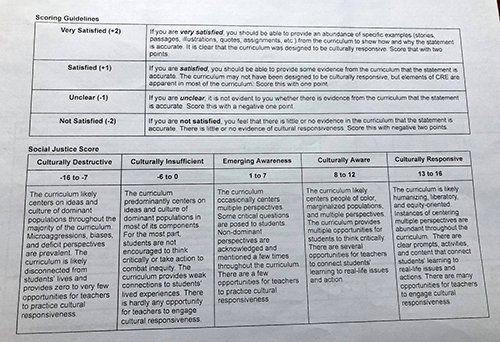
“There seem to be a lot of people who are afraid,” said a father of three. “They seem to be quite fragile. I’m shocked by the number of big burly white guys who seem to feel threatened.” One person asked the audience not to take the concerns expressed by and about People of Color “so personally.” “If I say, ‘I’ve experienced racism in this town,’ your response should not be ‘There are so many good people in this room.’ “
A brief digression here into Grinnell’s place in the history of Iowa’s race relations:
- Just three days ago, the town’s namesake college, Grinnell College, made national news with a poll showing that the majority of all Americans are dissatisfied with race relations today.
- Last fall, the town jumped into the statewide spotlight when the body of Michael Williams, a longtime resident who was Black, was found counties away and the four white people who confessed to killing him claimed race was not a factor.
- A student-led investigation found instances of racism at the on-campus grill that may date back to 2014, wrote Mundu Obrero Workers World in 2019.
- The college’s black student organizations and some of its leaders were attacked through social media in 2015, reports the student newspaper. Posts on the social media app Yik Yak used epithets and accused “blacks” of “ruining Grinnell,” the paper reported. The situation inspired better interaction between the school’s Black student leaders and administrators.
- A 2015 situation involving parents questioning an elementary school teacher’s language was investigated and then declared as a difference between an employee and parents. No disciplinary action was taken and the complaint was declared unsubstantiated: complaints of racism ruled unsubstantiated, reported KCCI.
- In 2010, a Mexican slur was spray-painted on a college building, the paper reported.
Grinnell College is also the former teaching home of Kesho Scott, a civil rights pioneer who helped debut Iowa’s historic Women’s March in 2017. She retired last year and in addition to countless other outreaches that have earned her public thanks from the Iowa Legislature, Scott also led a series of George Floyd memorials in small Iowa towns.
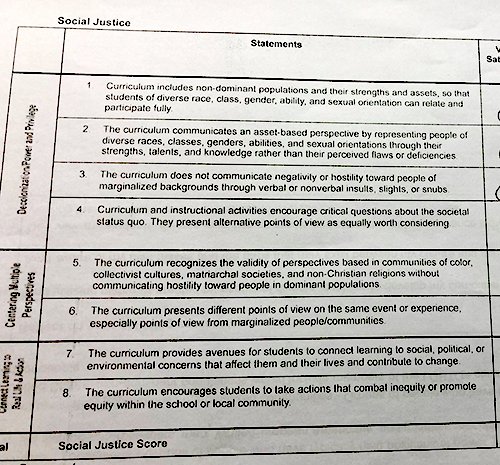
The town is obviously no stranger to tackling race relations. But as the above links illustrate, Grinnell is like many college or university towns (some might say Iowa City, for example): the surface appearance of diversity can sometimes mask racial tension underneath.
That’s what the March 10 School Board meeting illuminated: a real tension that is running strong. People of Color don’t feel as welcome or safe as society assumes they do, and still experience blatant and subtle hostility toward them based on skin color, race or assumed country of origin. White people feel stressed, over-scrutinized, and stereotyped.
As the meeting wore on, another troubling theme emerged, a form of “entitlement.” It soon became clear that those opposed to the diversity curriculum wanted their cake, and to eat it too. They were both asking for more morals-based education, and demanding less of it.
Many speakers upset at the diversity efforts asked for more focus on “the heart” or even blatant Christianity. But when it comes to race relations, or “being gay or not gay,” as one speaker put it, that apparently is where many white people believe “the heart” and moral education end. That’s where schools butt out, many of the speakers apparently believe. “You’re supposed to be focusing on the fundamentals,” was repeated over and over to the School Board.
But those speakers were missing the point: what if the parents had learned little to nothing about other races themselves, other than what they saw on TV or in movies? What if their definition of “fundamentals” was incomplete? What if our country’s historic lack of education on Black history has left some parents ill-equipped to teach on THAT part of history?
Some speakers were on top of this. They volunteered that the College or other resources helped them learn so much about People of Color, and in particular the history of slavery, that schools didn’t teach them. Many repeated this overlooked truth: that nothing could be more fundamental to American history than the history of unpaid, exploited slave labor that fueled the country’s economy for decades.
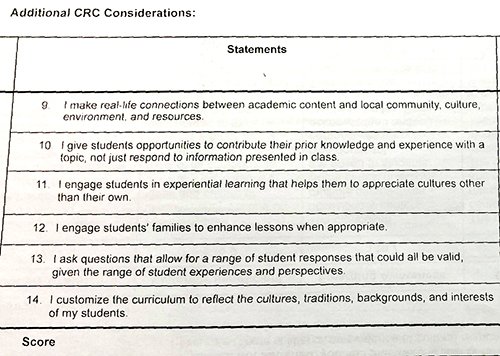
Most of the time, when these conversations have occurred at School Board meetings I’ve covered, I’ve been in the room. I did not have the luxury of reacting physically when especially hurtful moments occurred. This time (hidden blessing of the pandemic), I listened alone in my home office, with only my cats to witness.
I was free to hang my head in shame and crinkle my eyes when the white ladies started going on and on about the plight of pretty white females. To shake my head, p’shaw, and stand up with a power pose when the angry men spoke. To let my eyes water when one speaker shared about the horrendous online interaction she witnessed a few weeks ago, before it was deleted.
She described a Black student at the college who had recently posted about racism she had experienced. “Instead of replying to her with empathy, with compassion, with ‘how can we make you feel more welcome,’ white men belittled and degraded her,” the speaker shared. She cited some of the patronizing, elitist phrases that had been spewed at the woman online. “You need to do your homework.” “You clearly do not appreciate this community.” One commenter labeled the original poster as “not worthy.” “If our college students feel this way, how do our elementary and middle and high school students of color feel?” the speaker asked.
My takeaway from this evening is four-fold:
- Once the fire of victimization and fear is lit, you can’t unlight it. Once the anger of the white masses had been aroused by that one man’s letter, it didn’t matter that he admitted in hindsight he’d been wrong. Pandora’s Box had been opened; the fire of misinformation was burning out of control and needed to be STOPPED. It’s like an oil fire in the kitchen; you can’t douse it with water, that makes it worse. You need the right ingredient, a fire extinguisher or baking soda, to SQUASH that fire. That’s what I perceive the Grinnell School Board and others seeking to revisit curriculum to be doing: bringing the right ingredients to the source of racism.
- The instigators start problems, but they are not to blame for continuing them. They are not to blame for the stubborn, systemic racism lodged all throughout our schools, government institutions, and ways we do things. We are to blame, as a collective, because of how we use the information offered to us. Are we taking in what we learn as we go — or stubbornly clinging to what we heard last week, last year, last decade, or when we were kids? Those angry Grinnell speakers are entrenched in outdated information. It’s the same reason why the Iowa Legislature’s anti-diversity bill echoes language from an old Trump executive order that has since been withdrawn; they have not integrated the new information provided to them. “It takes a village,” goes the old phrase. Most of the Grinnell “village” seems more interested in the distorted initial gripes, than the “come to Jesus” moment that arose. Until that part of the “village” decides to also step up, we’re at an impasse.
- Ego and control are truly at the heart of all of this, and are the psychological barriers blocking effective anti-racism efforts. From the revered bird’s eye view, the March 10 meeting was many expressions of “mine, mine mine,” parents grabbing for control through their children. “That’s MY role, not yours.” “I’M the parent, not you.” “Don’t you tell ME what to think or do.” Even before pondering whether THEY had something to learn, many parents were fixated on keeping something, claiming something, controlling something.
- No more separating race relations from gender relations or spirituality. March 10 illustrated why we choose through The Real MainStream to uphold the term “intersectional,” while far lefties and far righties join together to mock it as meaningless. Clearly, men felt threatened by discussions of race relations; clearly, many women felt that publicly proclaiming their own traditional gender role would win them points in the room. Clearly, several speakers portrayed race relations as somehow excluded from spirituality, with one literally proclaiming “God doesn’t care about that.” Clearly, tackling racism intersects with tackling the patriarchy and the most powerful imposer of it, religious institutions.
As we watch the Chauvin trial unfold, forced to relive George Floyd’s death, this is all even more relevant. Because for a trial over a murder that inspired a worldwide movement against racism, the word “racism” is shockingly absent.
Rather, the trial is pressing different questions: Why the utter lack of humanity that day? Why the harsh treatment and language from police, from the moment they first encountered Floyd, that would be unquestionably labeled abusive if uttered by anyone else, to anyone else? Why such a disregard for this one human’s pleas for help? Why did police feel comfortable positioning themselves in so many ways that day to block and suppress human connection?
The answer may very well be racism. But we don’t need that answer to recognize the deeper problems are ego, control, a refusal to listen, an immediate reaction that did not adapt as circumstances changed, an inability to take in context and adjust. An almost primitive exertion of dominance.
This is where I digress from anti-racism advocates who choose to describe racism as an “either/or” thing. “You’re either racist, or anti-racist,” goes a popular line. That is great for rallies and preaching to the choir — but it locks those against racism in an “us versus them” mentality with those who don’t get it yet. It stifles communication and makes the fight against racism harder.
It also fuels the feeling some parents expressed March 10, that they must accept a label related to things they did not personally experience, take part in, or agree with. This triggers a cognitive dissonance that, if talking about other topics, we’d encourage as critical thinking.
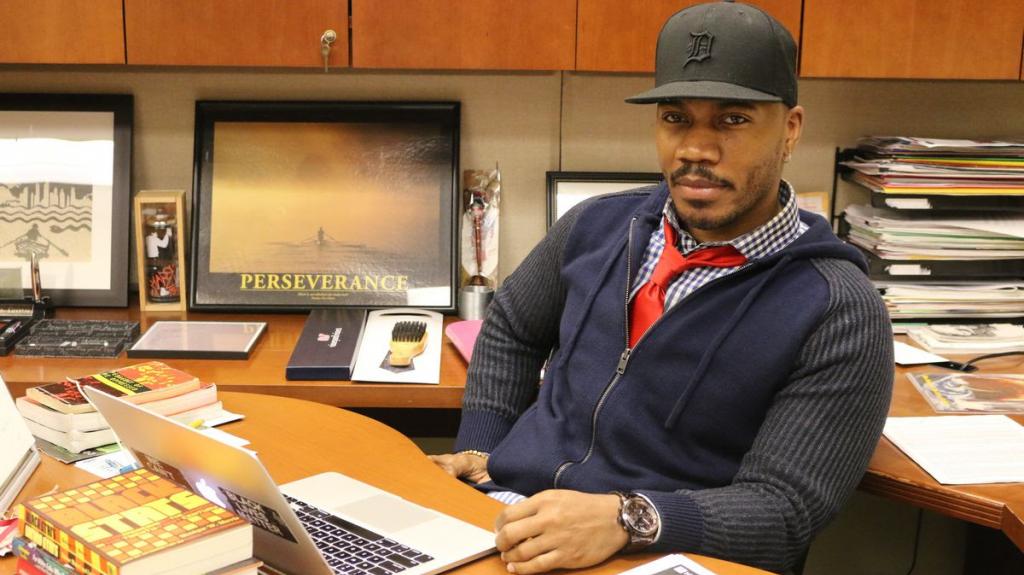
Fellow anti-racist advocates, I say we save ourselves and those we’re trying to reach from sorting through that cognitive dissonance. Rather than starting with and focusing only on “fighting racism,” what if we took broader lessons from situations like this School Board meeting?
What if we first focused on helping people get MORE comfortable, rather than feeling less comfortable, acknowledging what they don’t know? What if we can better help today’s adults acknowledge that they may not even be aware of how uncomfortable they are with “differences” until it all comes out at a School Board meeting?
What if we helped parents understand that learning more and better about race relations is no more “brainwashing” than building computer and tech skills into the curriculum through the 1980s and 1990s? As one speaker at the meeting said, race relations is a high priority for large corporations worldwide. It’s considered an essential part of doing business in a world interconnected through technology. “Do we want to be mediocre?” the speaker rightly asked.
What if we focused more on helping religious communities, especially Christian religious communities, better understand what research and science has to offer their faith? How can we help them recognize that race relations ARE part of spirituality, that Jesus was actually a Person of Color and not the pale-faced white guy with blondish-brown hair and blue eyes that most of us grew up with? What if we focused on providing what old-time religious folks needed to have faith that what they were taught as children about homosexuality was wrong?
What if we focused on toxic masculinity? That “bowing up” of booming voices, physical prowess, and assertions of traditional roles? How can we help male-identifying people soften the part of them that glorifies the most primitive, domineering effects of testosterone?
These are the sub-themes that are part of fighting racism. If we really want to be effective, we need to keep the intersectional approach that knocks down the barriers so vividly on display at this School Board meeting — even by audio-only. Continuously presenting the fight against racism as an “us versus them” battle won’t get us there.
The best suggestion to arise out of Grinnell’s painful Board meeting was the most obvious one: involve more People of Color. Grinnell needs more School Board members and decision-makers of color. More full-time residents of color. More parents and kids of color. “You all need more Friends of Color,” one speaker said in what felt like an oasis of levity among the intense discussion.
In closing, I’m thankful to the Grinnell community, including those who spouted things I found abhorrent. How else are we to know of our communities’ issues if we don’t actually KNOW them, by hearing them spoken out loud, or reading them?
Now it’s time for the work … the complicated, always intersectional work, to fight racism effectively. Do not try to keep it simple.
Christine Hawes is editor of The Real MainStream. Contact her at 319-777-9839 or chris@therealmainstream.com

